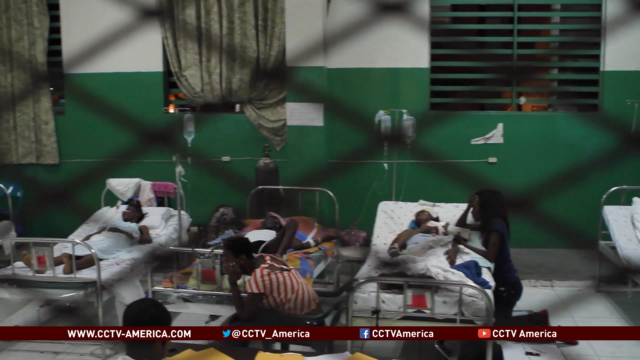In Haiti fears are growing over a new wave of disease outbreaks. Cholera, which had been eradicated from the country for nearly a century, is back with a vengeance. So far, 700,000 Haitians have contracted the disease and 9,000 have died.
Authorities blame the cholera return on U.N. troops stationed in Haiti after the devastating earthquake in 2010, as well as a lack of sufficient water treatment systems.

Haiti steps up health care measures to fight disease
In Haiti fears are growing over a new wave of disease outbreaks. Cholera, which had been eradicated from the country for nearly a century, is back with a vengeance. So far, 700,000 Haitians have contracted the disease and 9,000 have died.Haiti has also been dealing with an epidemic of the mosquito-borne Chikungunya virus which causes excruciating joint pain and high fever. During the rainy season, mosquitoes lay their eggs in pools of water left by the rains, leading to swarms of the disease-carrying insects.
In response, the Haitian government has attempted to improve the country’s health care system. After conducting widespread vaccination and hygiene campaigns, the number of cholera cases has severely declined. Additionally, survivors of the earthquake, who had at one point lived in tent cities outside the capital that were breading grounds for diseases, have almost all been relocated to more permanent homes.
They have also introduced a new national ambulance service, the first of its kind for Haiti. This includes 56 ambulances placed strategically around the country and a helicopter service — which has saved many lives. The ambulances now also have a reliable hospital to send patients. The Bernard Geves Hospital is a small, state-of-the-art facility that performs 2,500 operations a year. Before the earthquake, it had only been an outpatient center.
Correspondent Gerry Hadden reports from Port-au-Prince on Haiti’s attempts to improve its health care.
 CGTN America
CGTN America
